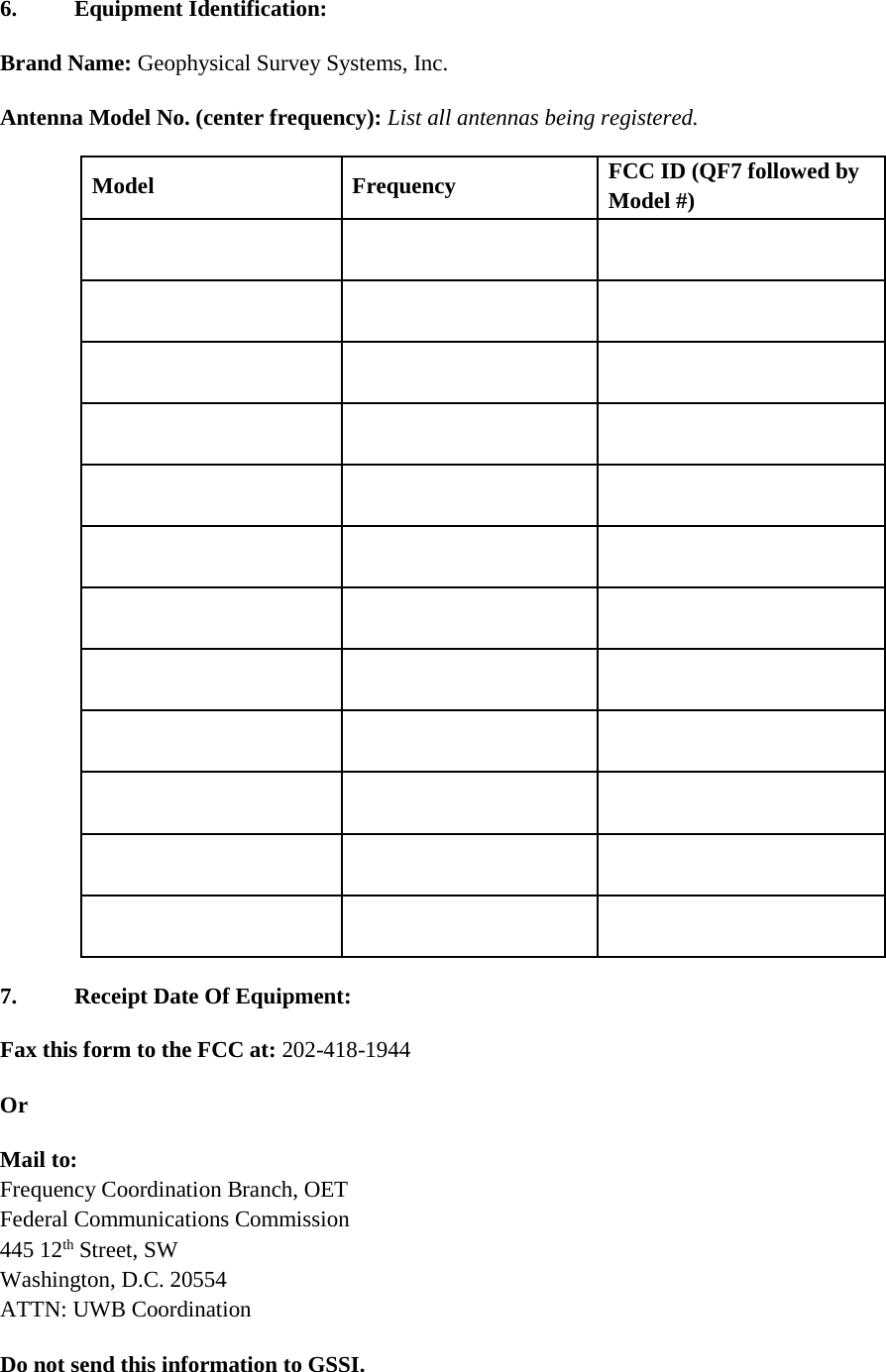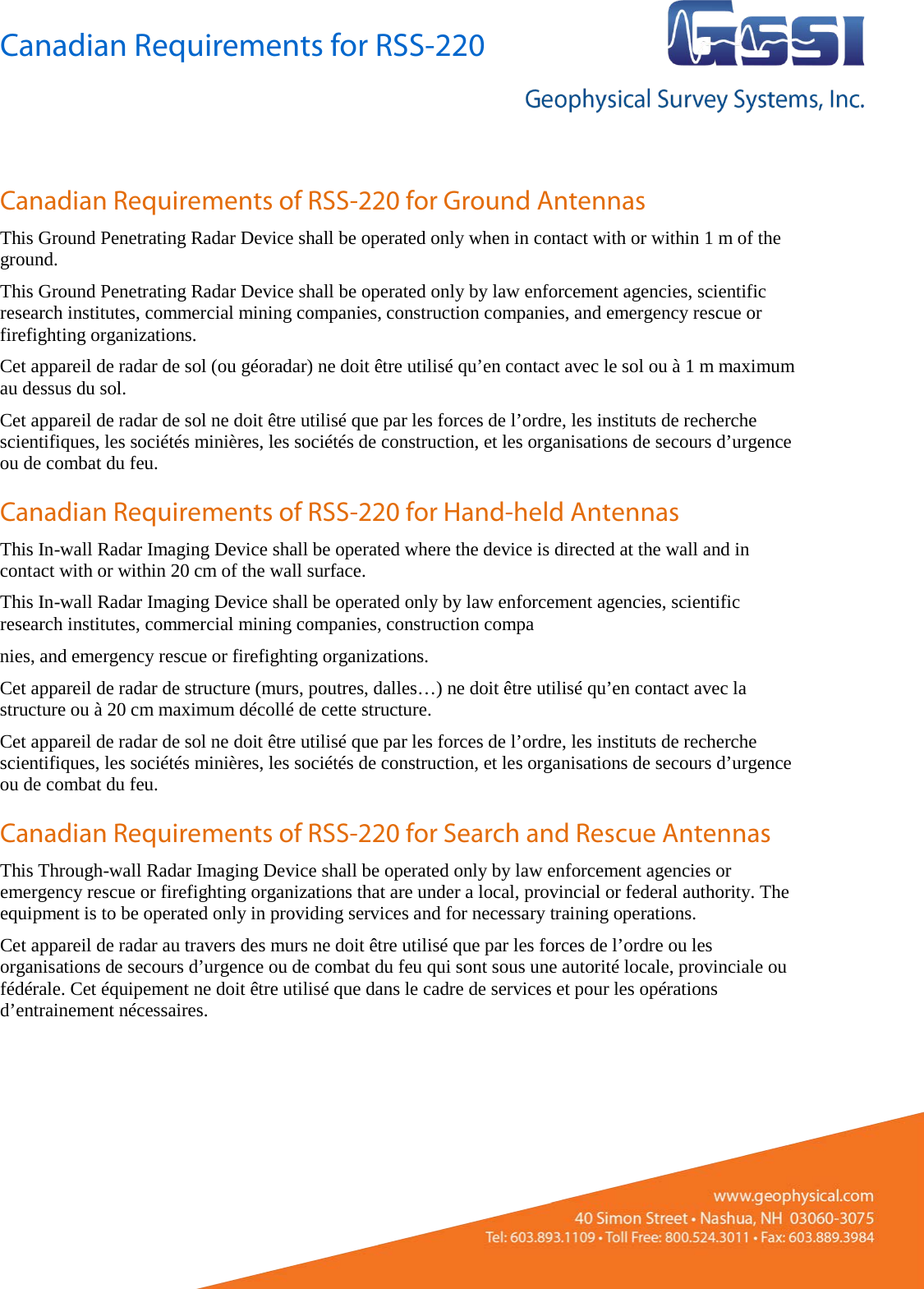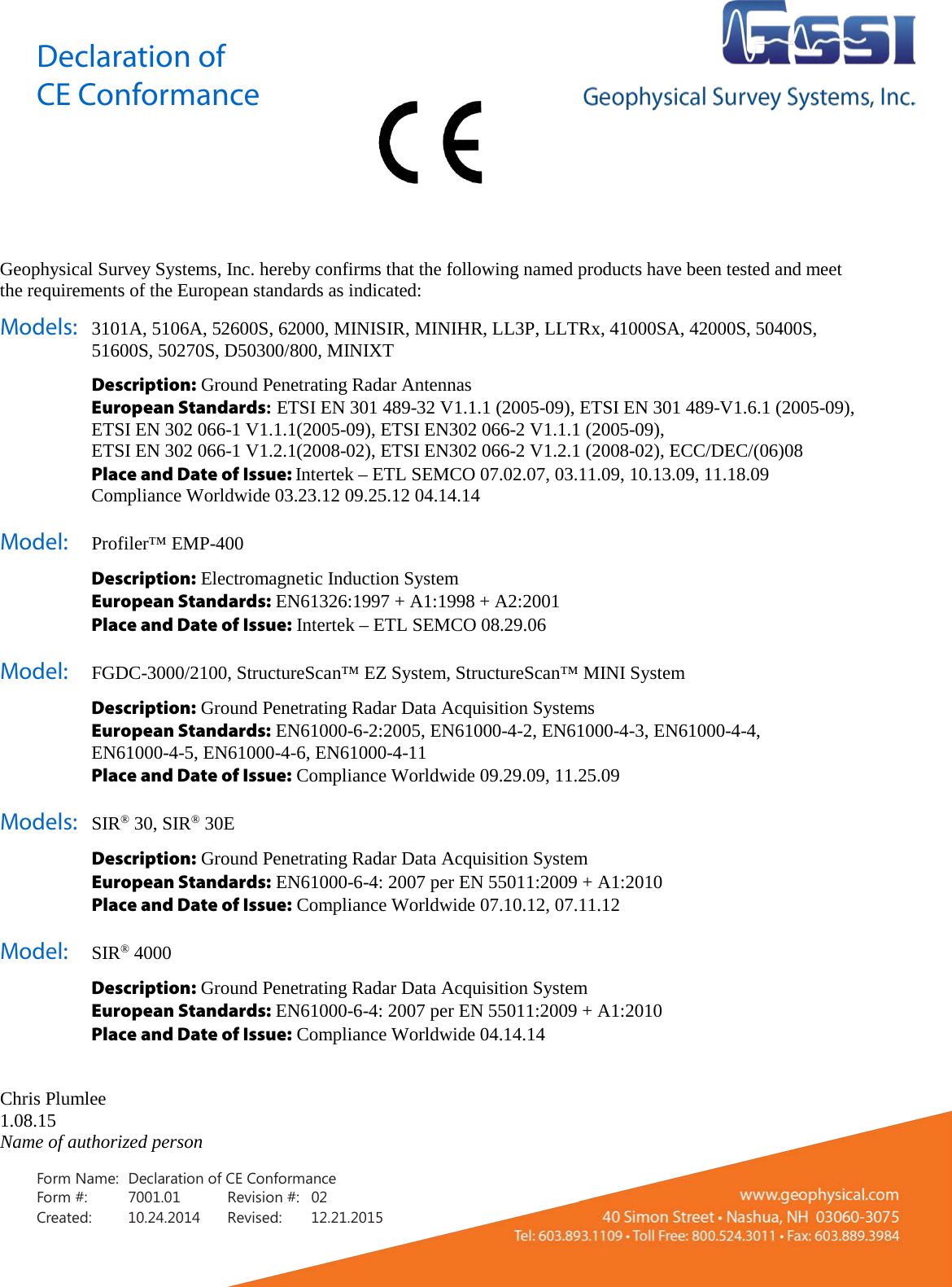Geophysical Survey Systems MINIXT The StructureScan Mini XT is a GPR handheld analyzer User Manual GSSI StructureScan Mini XT Quick Start Guide
Geophysical Survey Systems, Inc. The StructureScan Mini XT is a GPR handheld analyzer GSSI StructureScan Mini XT Quick Start Guide
Users Manual
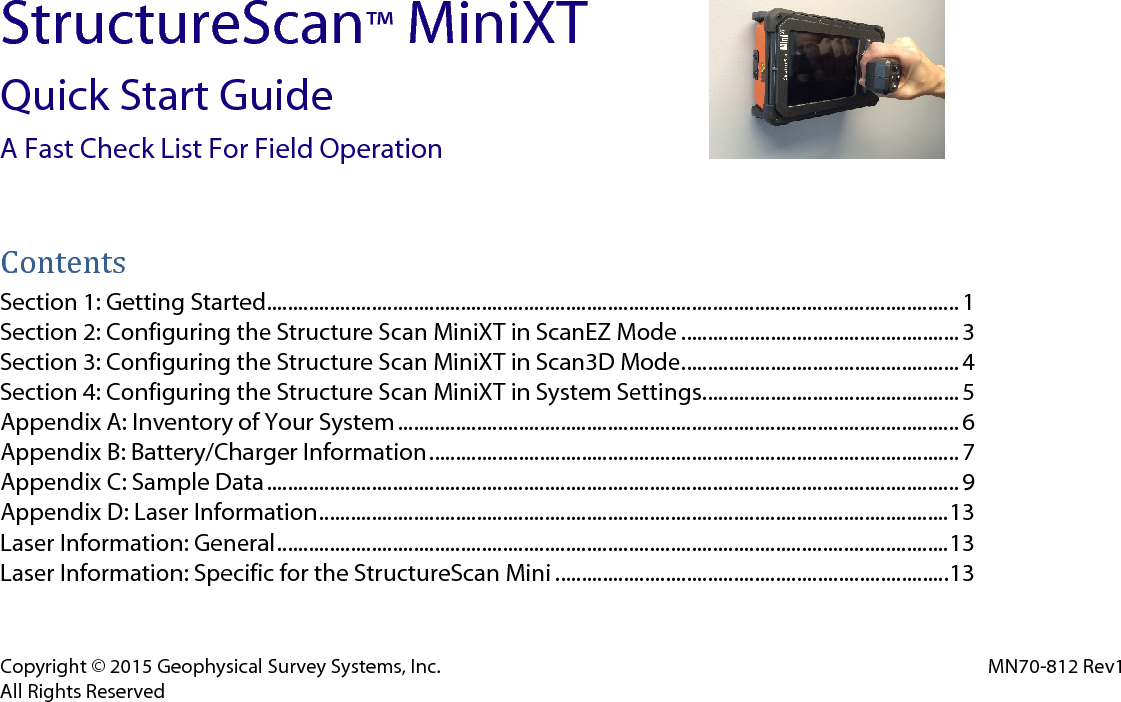
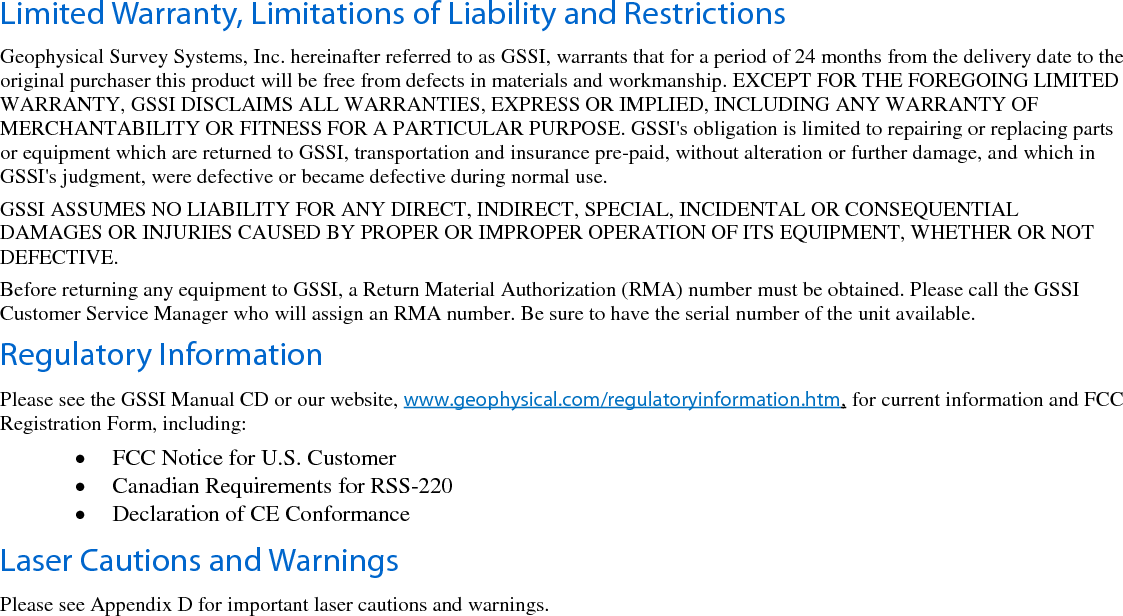
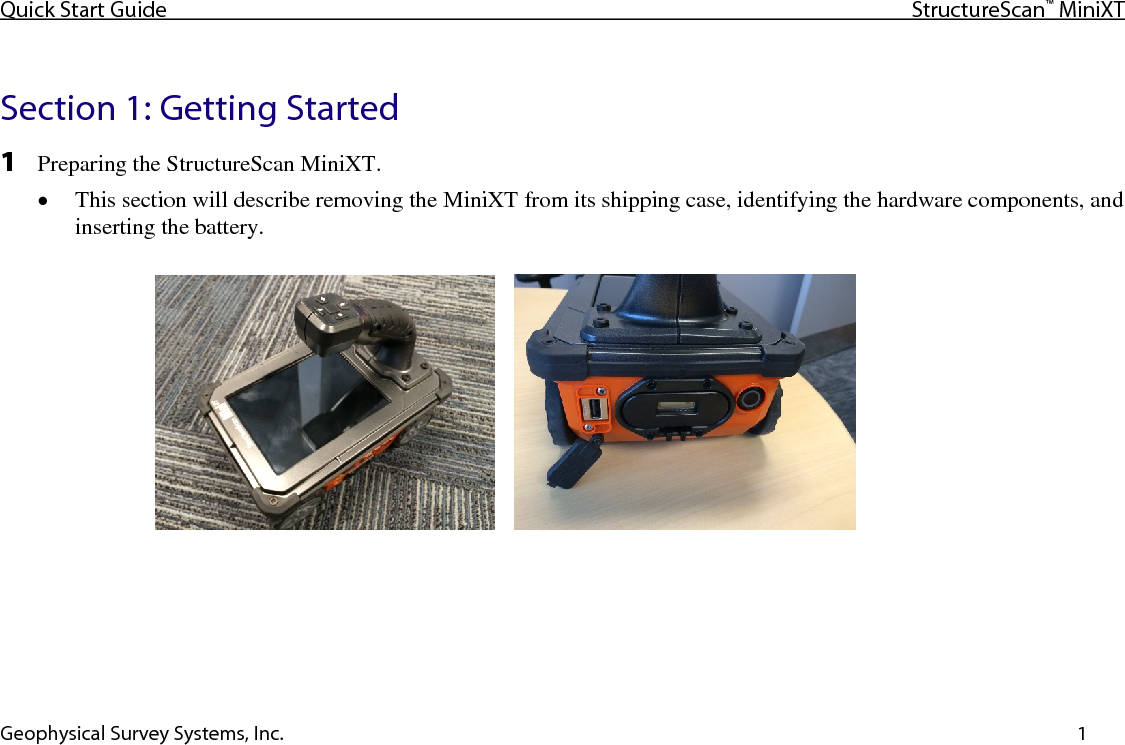
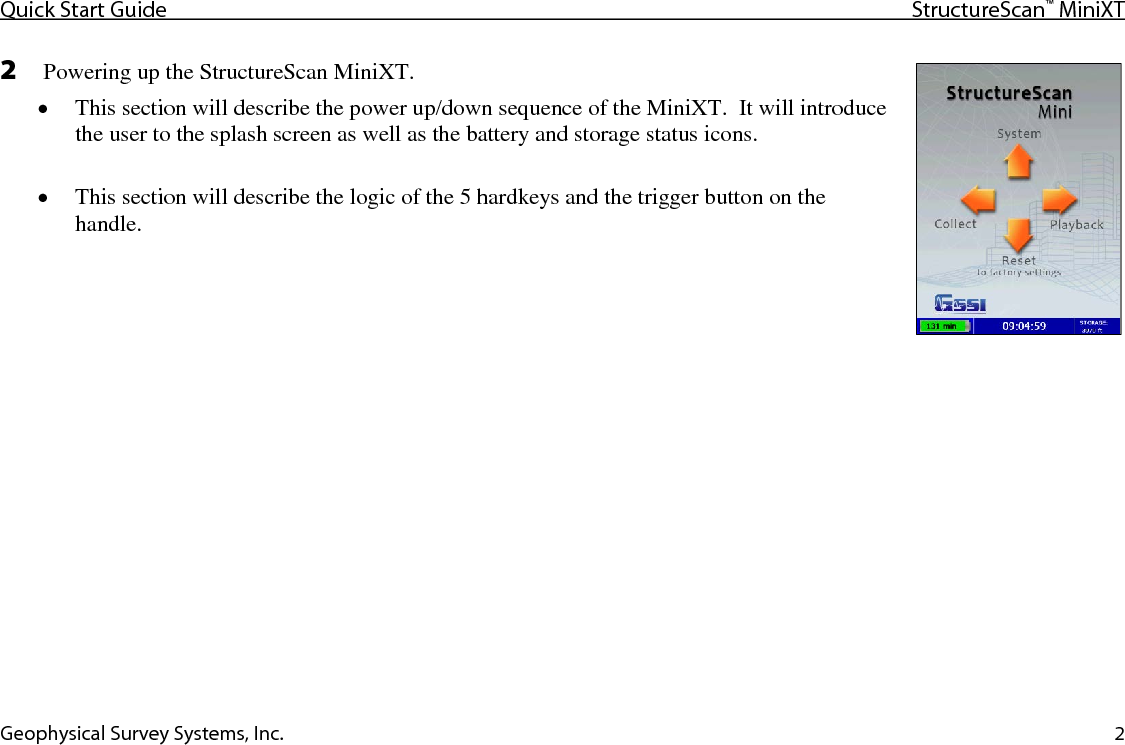
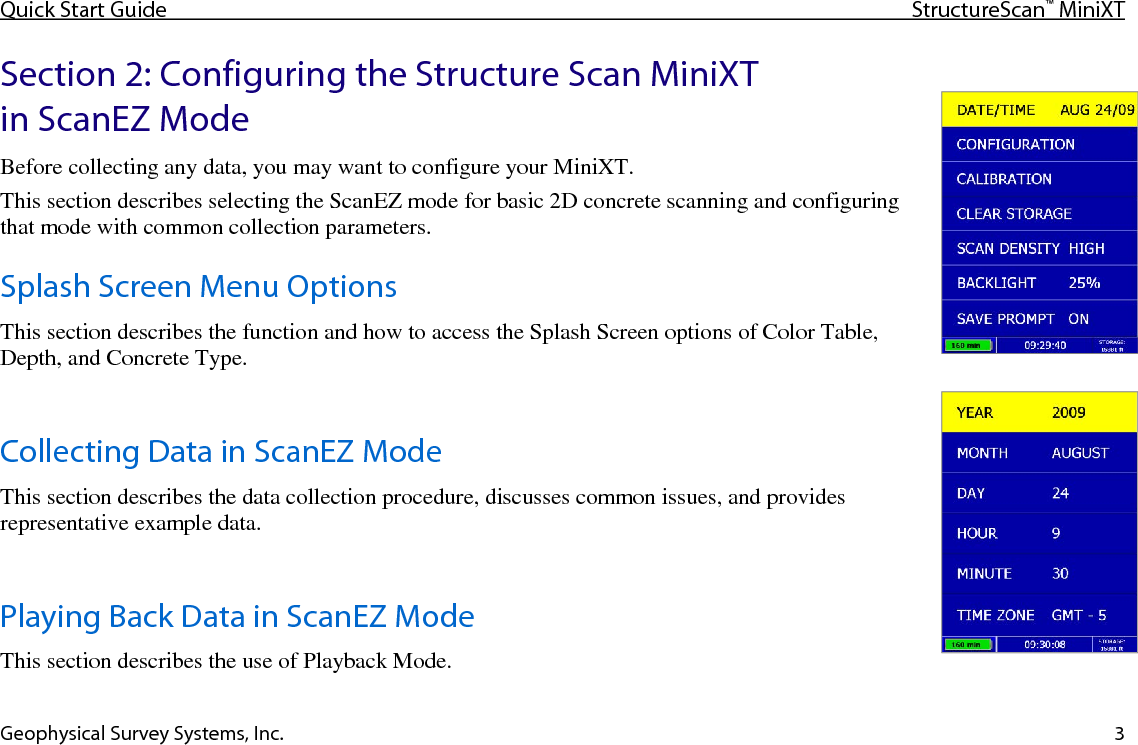
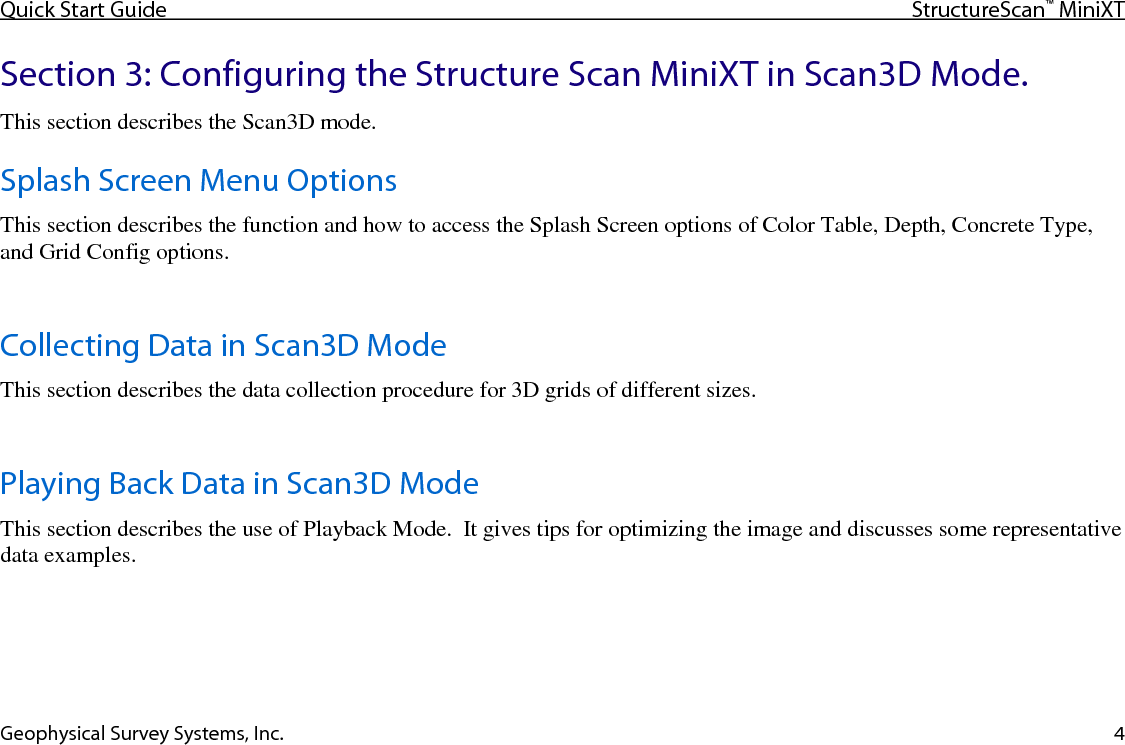
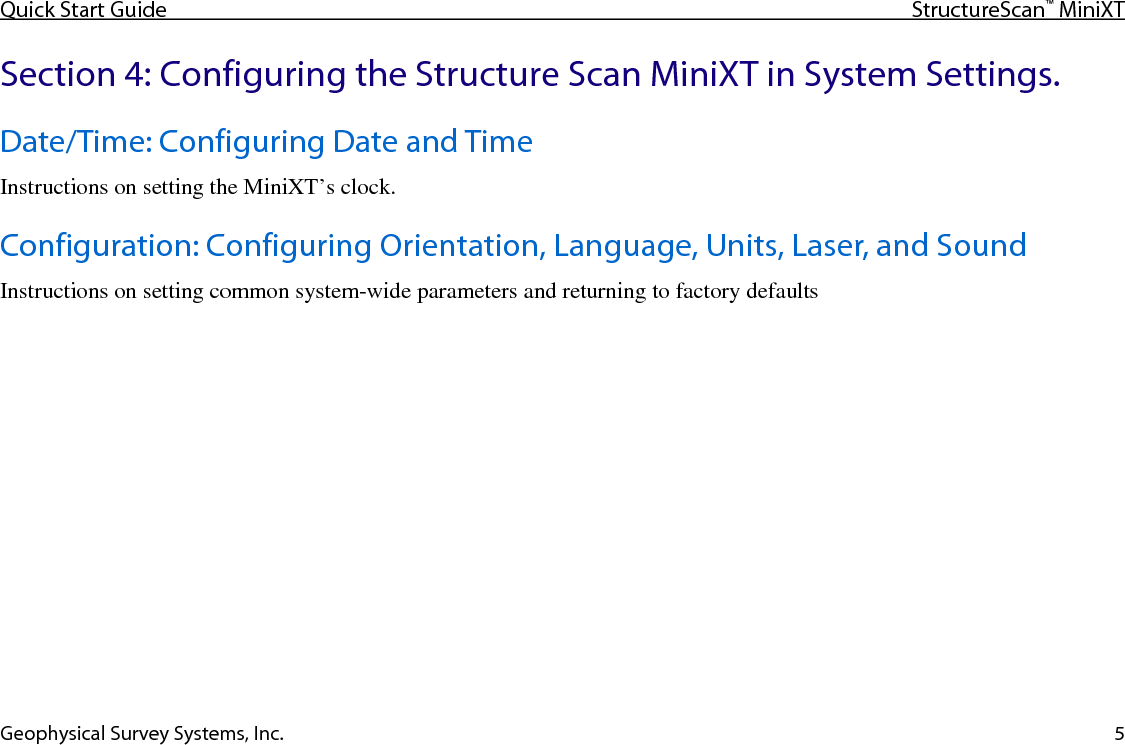
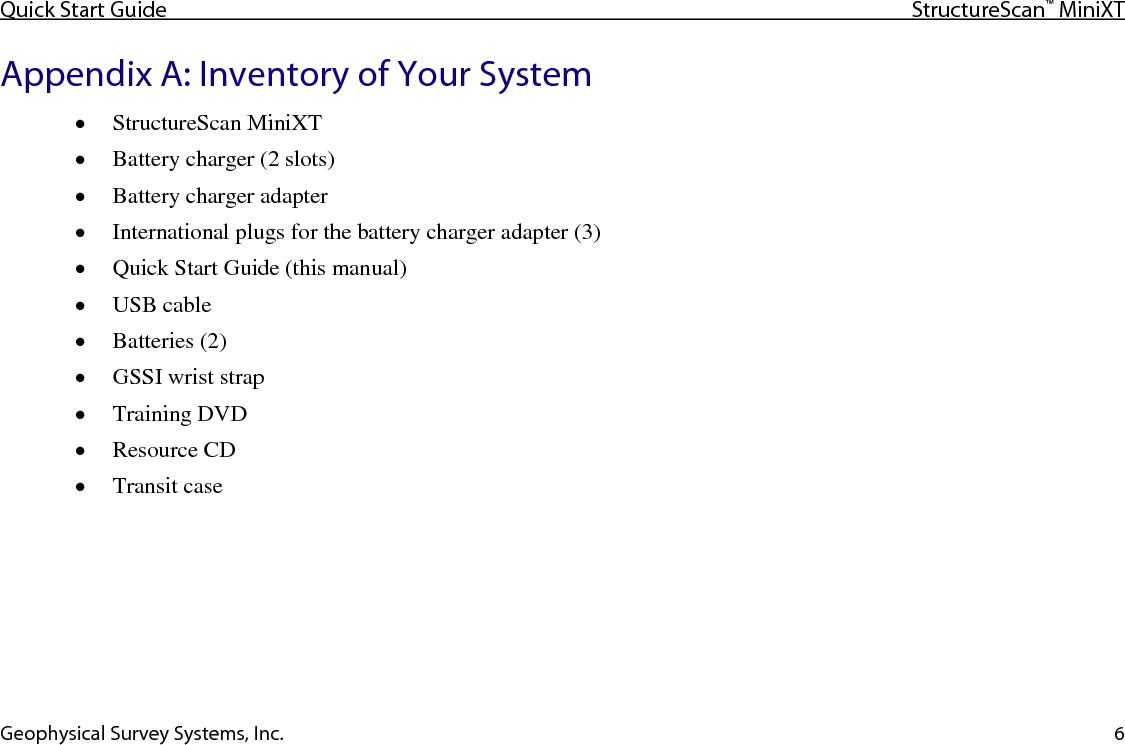
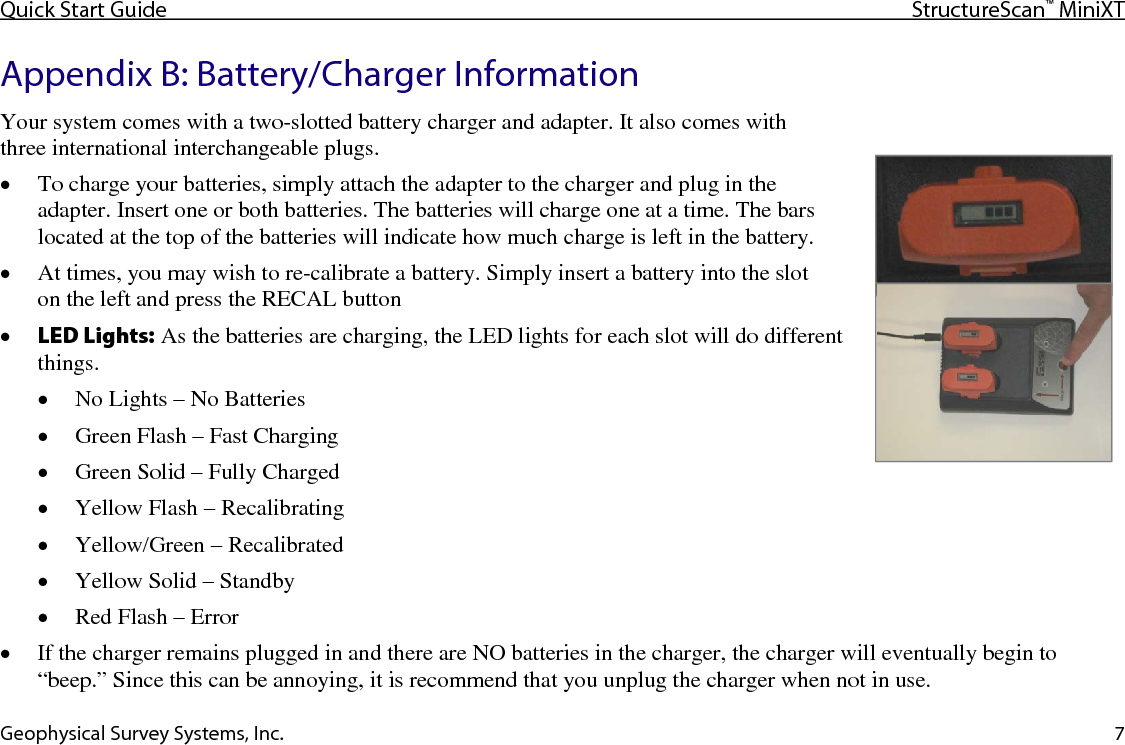
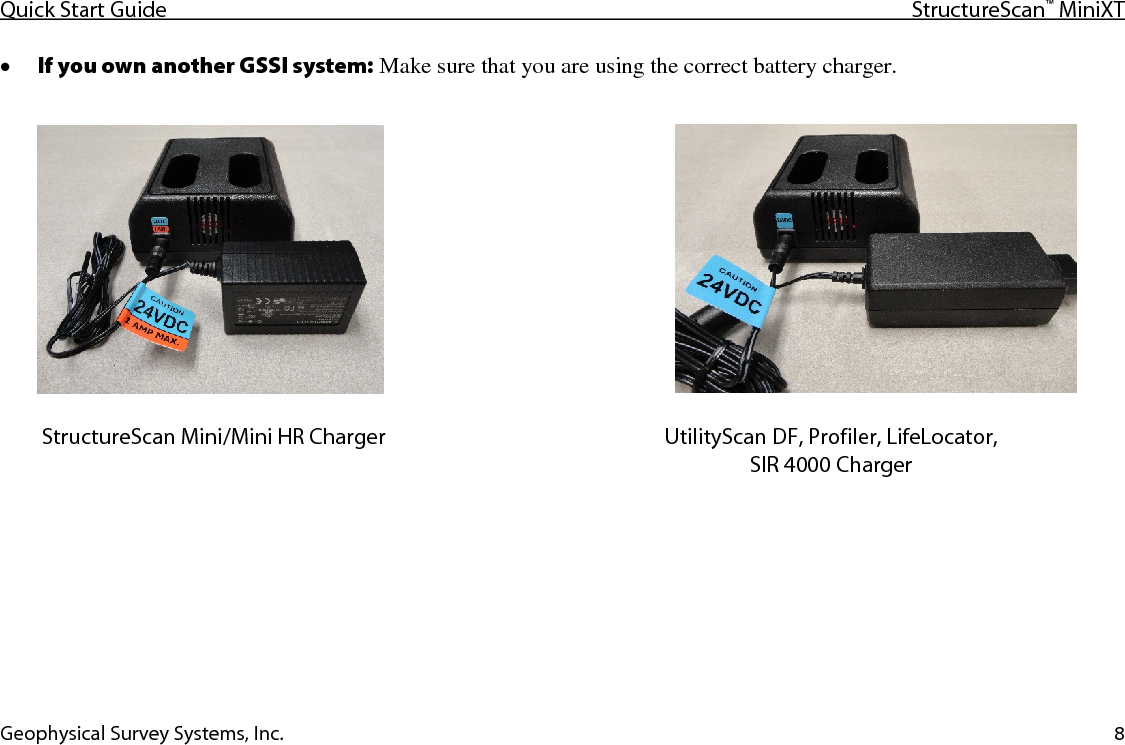
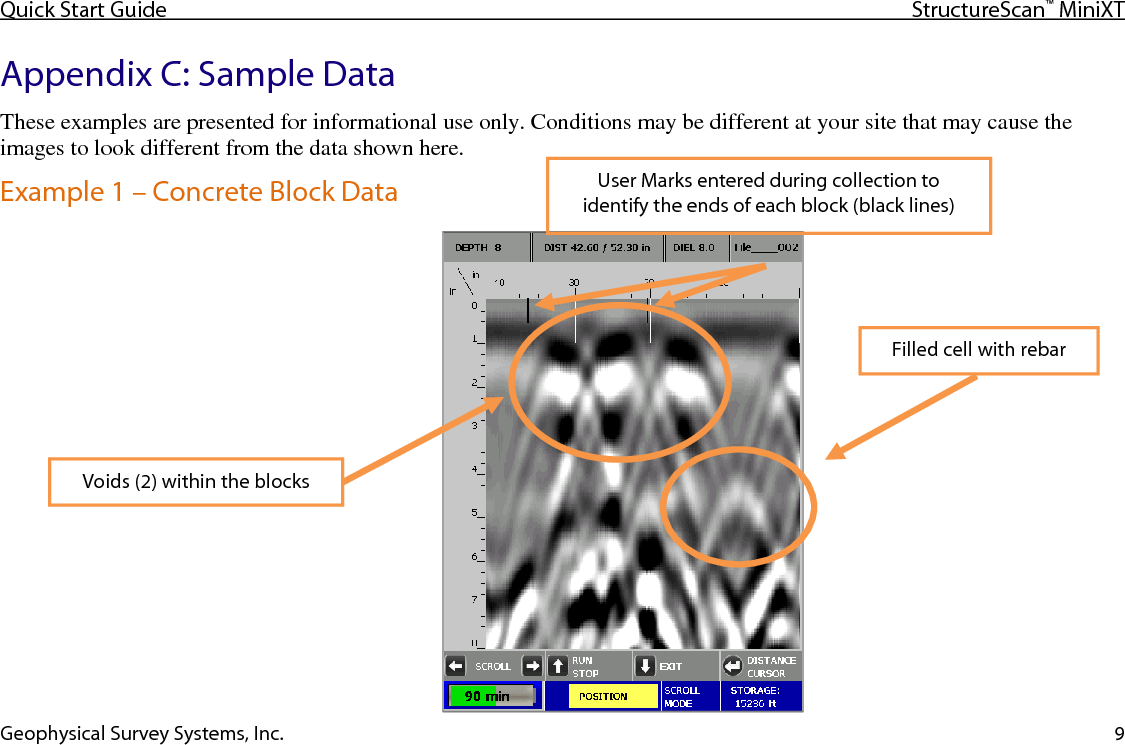
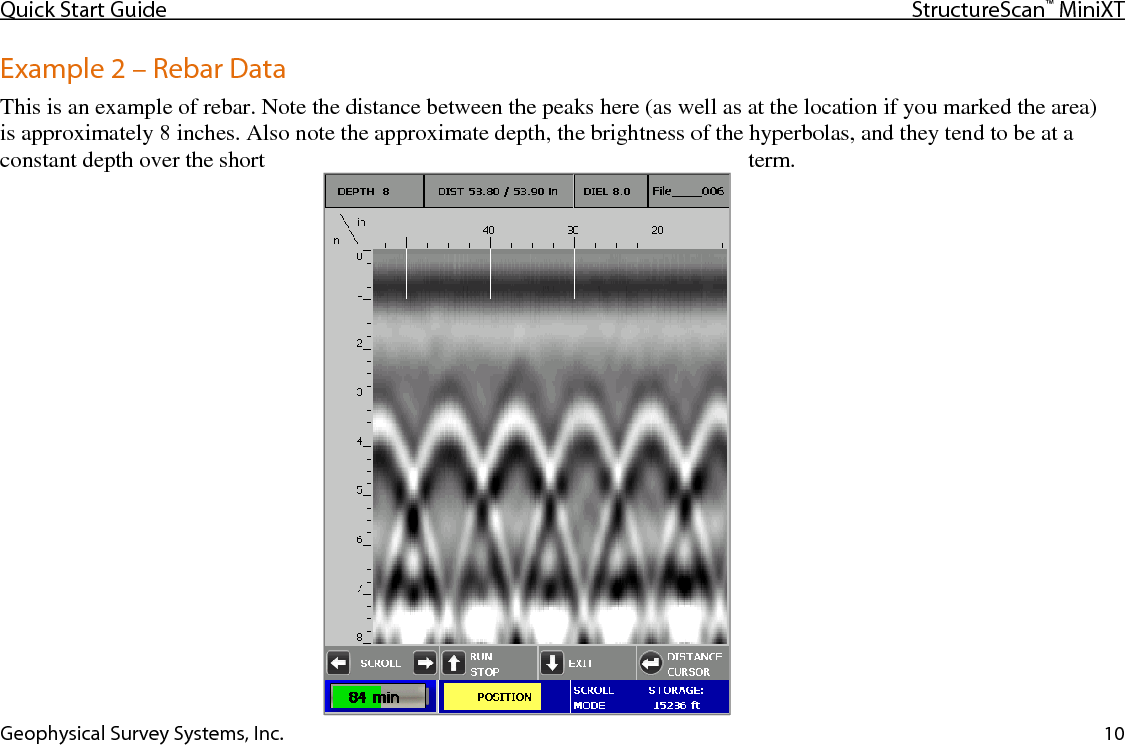
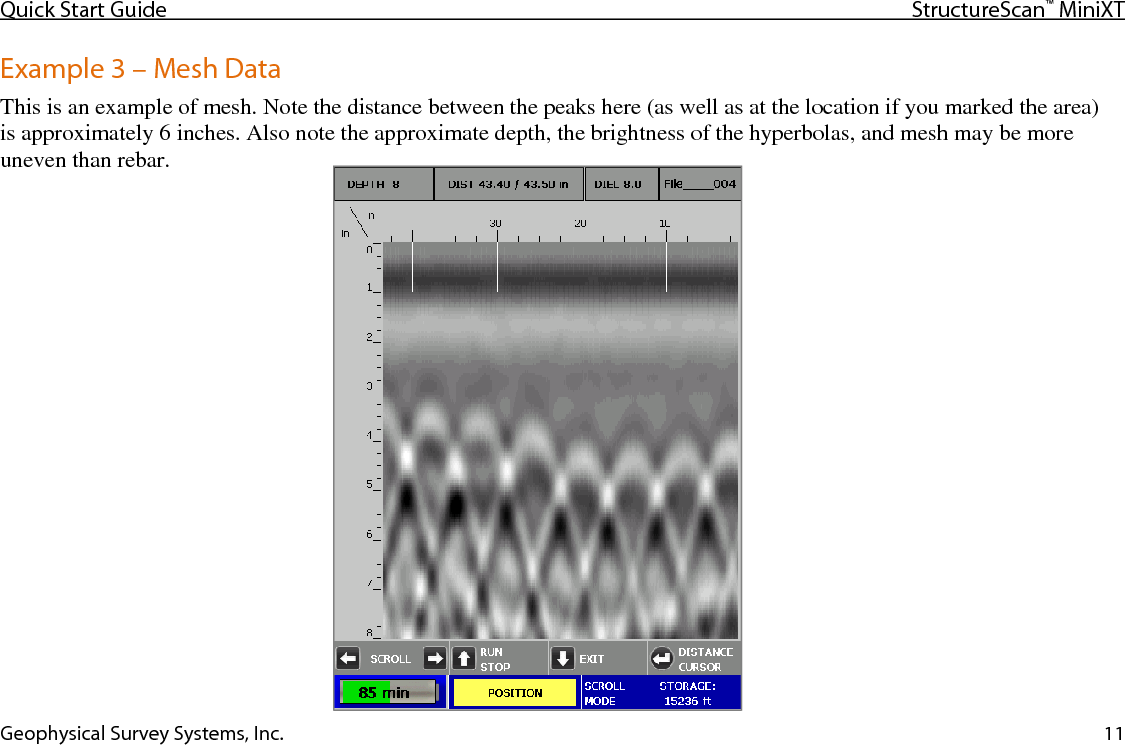
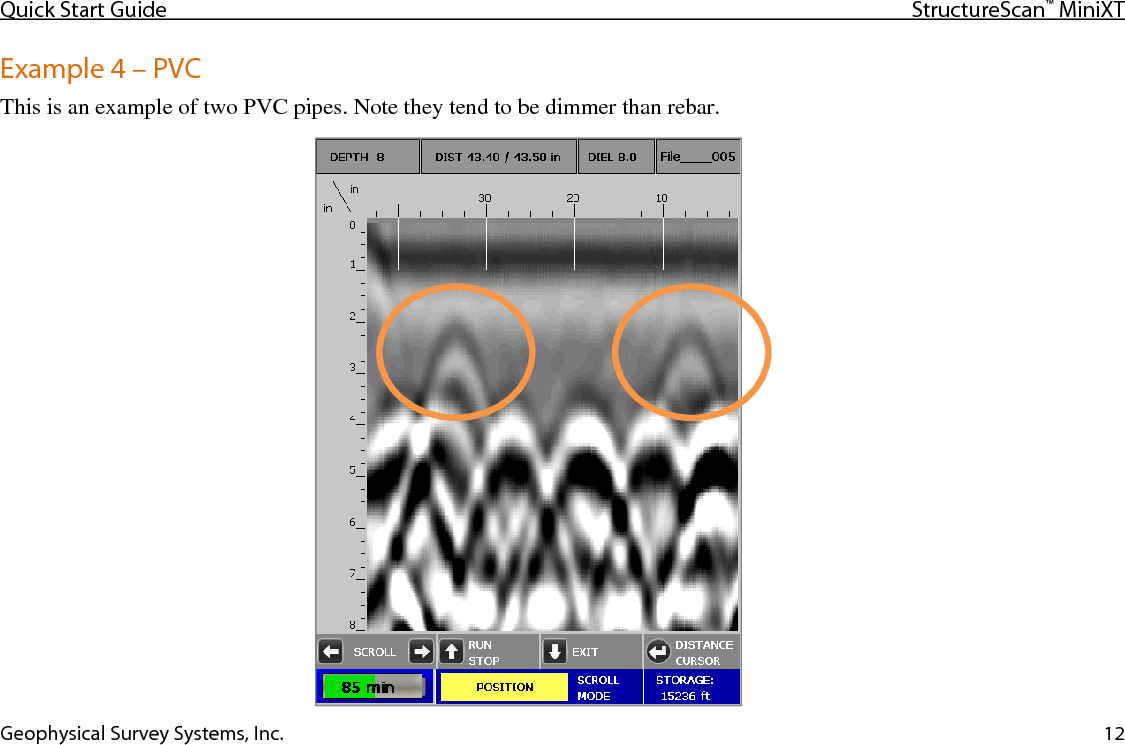
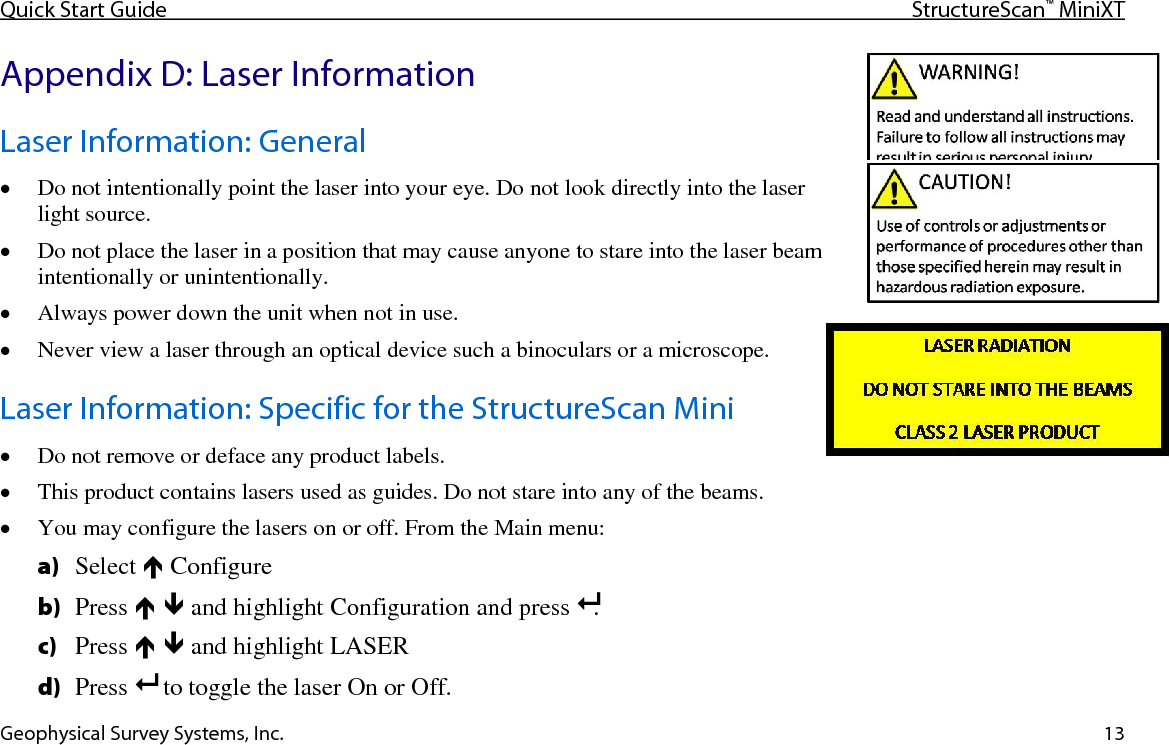
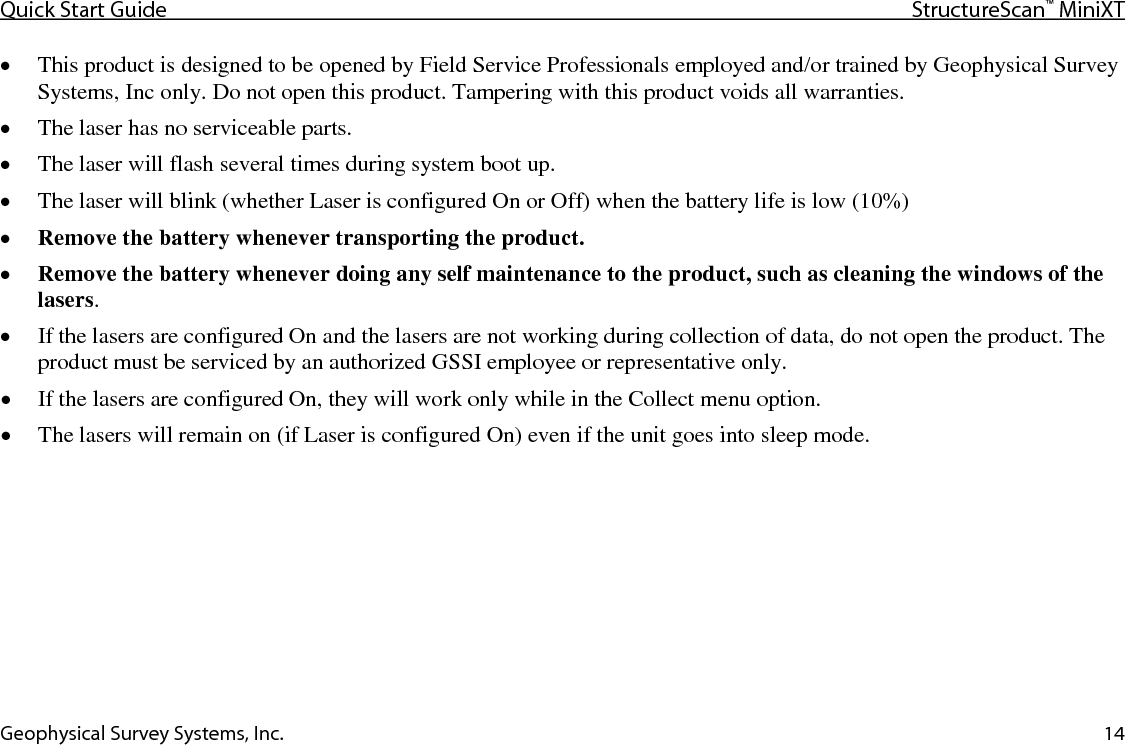

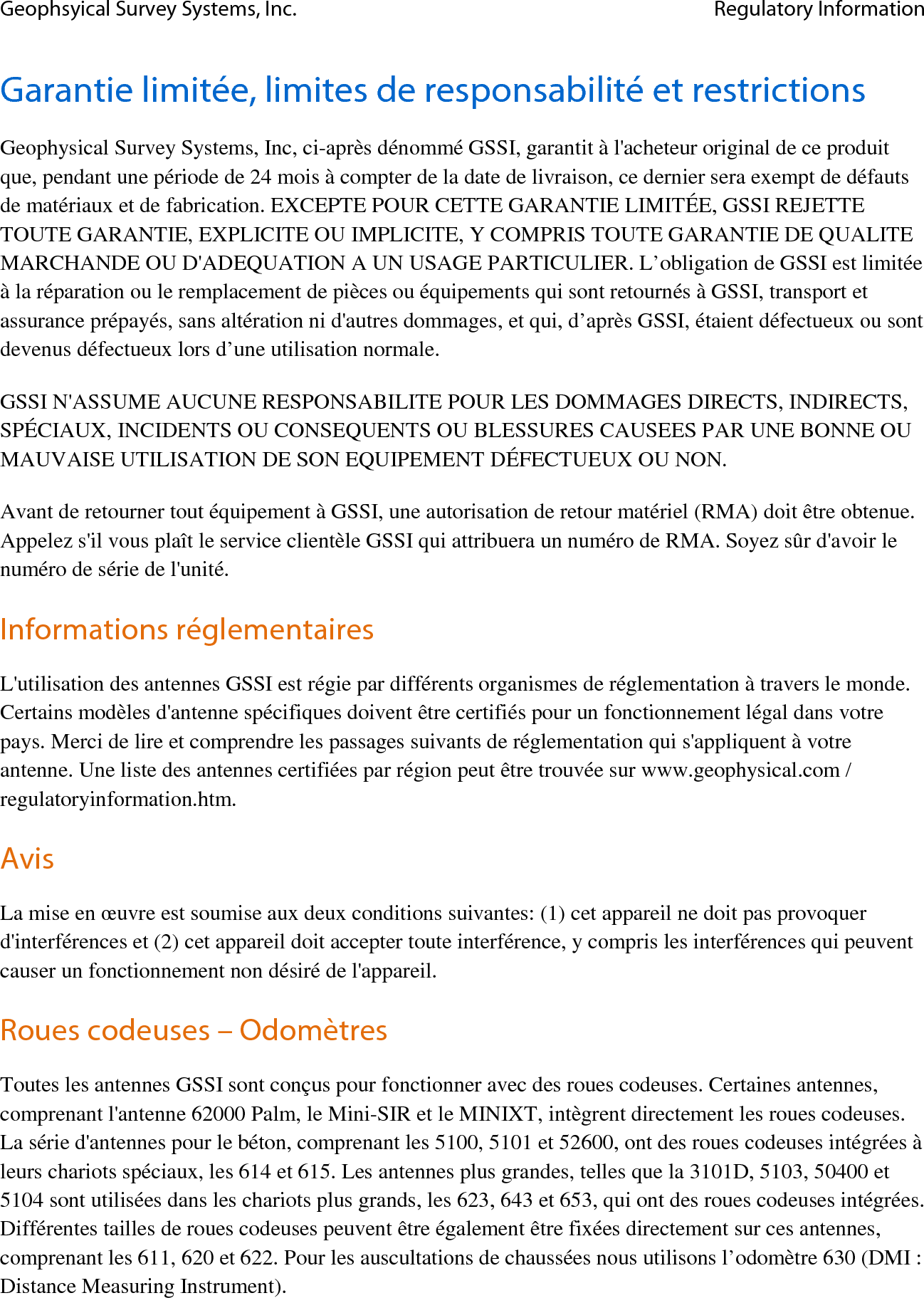
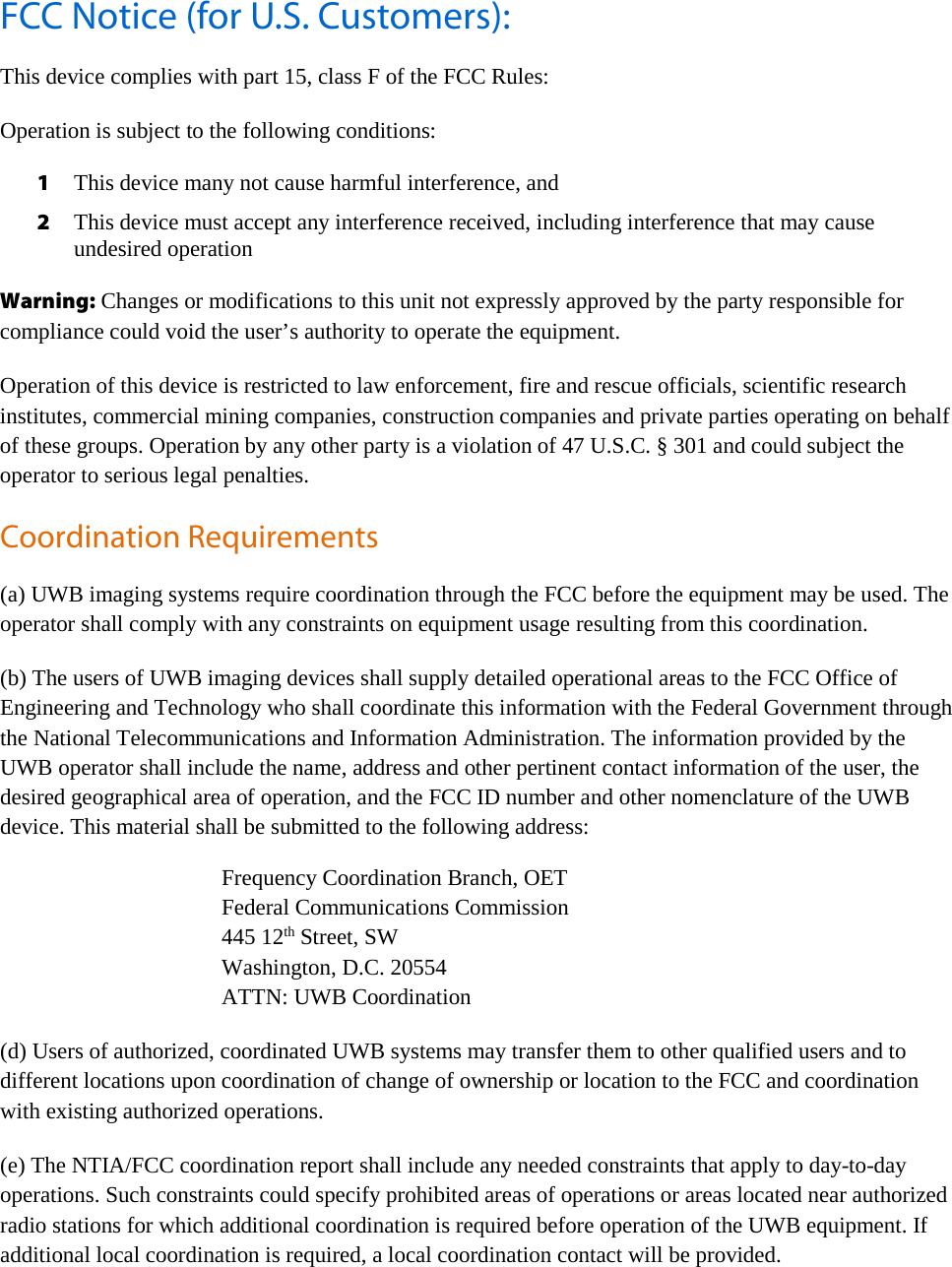
![For U.S. Customers Ground Penetrating Radar Coordination Notice And Equipment Registration Note: This form is only for Domestic United States users. The Federal Communications Commission (FCC) requires that all users of GPR who purchased antennas after July 15th, 2002 register their equipment and areas of operation. It is required that you fill out this form and fax or mail to the FCC. Failure to do this is a violation of Federal law. 1. Date: 2. Company name: 3. Address: 4. Contact Information [contact name and phone number]: 5. Area Of Operation [state(s)]: ---Continued on next page.](https://usermanual.wiki/Geophysical-Survey-Systems/MINIXT/User-Guide-2883303-Page-21.png)
